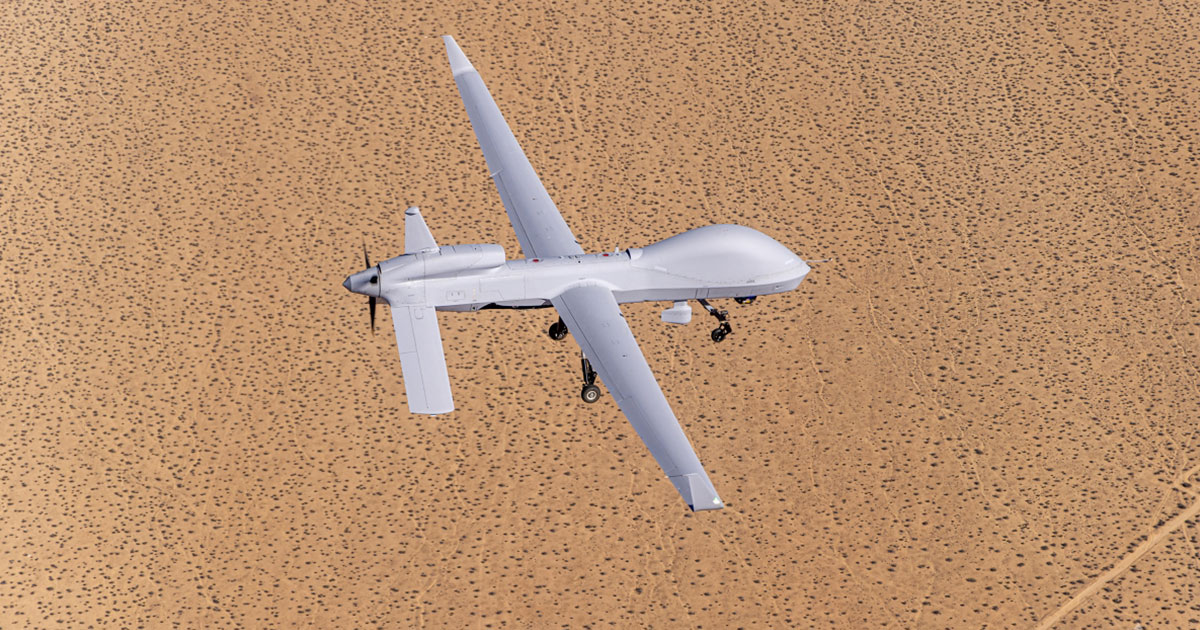SOURCE: IDRW.ORG


According to a report by The Sunday Guardian, the Indian Ministry of Defence (MoD) is experiencing second thoughts regarding the proposed acquisition of 31 units of the MQ-9B Reaper drones, manufactured by General Atomics. The potential deal, which includes control stations, missiles, and auxiliary equipment, is valued at an estimated $30 million per drone. However, recent developments on the global stage, particularly the ease with which Houthi rebels in Yemen have allegedly been able to bring down these drones, are causing alarm in both South Block and North Block, the administrative nerve centers of India’s government.
One of the key factors driving the Indian military’s push for the MQ-9B Reapers was the ongoing tension with China, particularly following the June 2020 Galwan Valley clash, which highlighted the need for enhanced surveillance and reconnaissance capabilities along the India-China border. With the ability to carry out both surveillance and strike missions, the MQ-9B seemed like a powerful addition to India’s arsenal. However, the performance of these drones in Yemen has raised critical questions about their viability in high-threat environments.
Since last year, Houthi rebels in Yemen have reportedly been able to down several Reaper drones using relatively simple offensive techniques. The vulnerability of these high-cost drones has cast a shadow over their perceived advantages, leading many in India’s defense establishment to question whether the MQ-9B drones are truly worth the investment, especially given their susceptibility to enemy fire.
One of the major concerns highlighted by experts is the MQ-9B Reaper’s relatively low speed and lack of robust defensive systems. Capable of reaching a maximum speed of around 300 mph, the Reaper is slow compared to other combat aircraft, making it an easier target for enemy fire, particularly from rudimentary or lower-tech adversaries. This has become evident in Yemen, where Houthi forces have been able to target and neutralize these drones with surprising success, underscoring their vulnerability in contested airspace.
The MQ-9B’s lack of defensive countermeasures, coupled with its slower speed, makes it particularly susceptible to anti-aircraft fire or even shoulder-launched missiles, raising concerns about how well these drones would perform in high-threat environments, like those along the India-China border. With both countries heavily invested in advanced radar, missile, and air defense systems, the MQ-9B might struggle to deliver the operational effectiveness that the Indian military initially hoped for.
The Indian military’s desire for the MQ-9B drones stems from the need for enhanced situational awareness and the ability to conduct precision strikes in border areas, particularly in regions where human-operated reconnaissance missions would be challenging. The drones’ long endurance and ability to operate over large distances without the need for refueling offer a significant advantage for border patrols and intelligence gathering.
However, these advantages are increasingly being overshadowed by concerns over the drones’ vulnerabilities. The fact that Houthi rebels — a non-state actor using relatively low-tech equipment — have been able to neutralize the drones has prompted a reassessment of their value. Given the highly contested airspace along the Line of Actual Control (LAC) with China, where advanced missile systems and fighter jets are constantly on alert, the MQ-9B could be a high-value target with limited protection.
At $30 million per unit, the MQ-9B drones represent a significant financial commitment for India, especially when the cost of control stations, missiles, and other ancillary equipment is factored in. While the drones offer unmatched surveillance and strike capabilities in relatively low-risk environments, their operational effectiveness in a high-threat zone like the India-China border remains questionable.
Indian defense analysts are now questioning whether this acquisition is a prudent use of resources, particularly when there may be other, more cost-effective alternatives available. Indigenous unmanned aerial vehicles (UAVs) and drone programs, like those developed by the Defense Research and Development Organisation (DRDO) and private Indian firms, are increasingly seen as viable alternatives, offering similar capabilities at a lower cost while supporting India’s push for defense self-reliance.
NOTE : Article cannot be reproduced without written permission of idrw.org in any form even for YouTube Videos to avoid Copy right strikes. Websites doing illegal reproductions will get DMCA and Legal Notices.